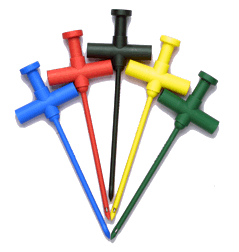Posted: December 22, 2005 at 5:14 PM / IP Logged
Posted: December 22, 2005 at 5:30 PM / IP Logged
Posted: December 22, 2005 at 5:45 PM / IP Logged
Posted: December 22, 2005 at 5:56 PM / IP Logged
Posted: December 22, 2005 at 6:49 PM / IP Logged
Posted: December 23, 2005 at 1:36 AM / IP Logged
Posted: December 23, 2005 at 3:00 AM / IP Logged
Posted: December 23, 2005 at 7:23 AM / IP Logged
Posted: December 23, 2005 at 7:53 AM / IP Logged
Posted: January 09, 2006 at 6:09 PM / IP Logged
Sorry, you can NOT post a reply.
This topic is closed.
 Printable version
Printable version


| You cannot post new topics in this forum You cannot reply to topics in this forum You cannot delete your posts in this forum You cannot edit your posts in this forum You cannot create polls in this forum You cannot vote in polls in this forum |

| Search the12volt.com |
Follow the12volt.com 
Sunday, November 23, 2025 • Copyright © 1999-2025 the12volt.com, All Rights Reserved • Privacy Policy & Use of Cookies


Sunday, November 23, 2025 • Copyright © 1999-2025 the12volt.com, All Rights Reserved • Privacy Policy & Use of Cookies
Disclaimer:
*All information on this site ( the12volt.com ) is provided "as is" without any warranty of any kind, either expressed or implied, including but not limited to fitness for a particular use. Any user assumes the entire risk as to the accuracy and use of this information. Please
verify all wire colors and diagrams before applying any information.










 These are supposed to handle wire sizes down to 0.050 to 0.150, so that might cover a pretty good percentage of the wires you'd want to probe.
These are supposed to handle wire sizes down to 0.050 to 0.150, so that might cover a pretty good percentage of the wires you'd want to probe.



 This is a closeup of the business end of the probe-
It has a nice wedge taper to slip inside a bundle of wires, then you just push the spring loaded release in the rear of the probe, turn it sideways and hook the wire you want to probe, pull back lightly to keep the wire centered in the V-groove, release the probe, and the spring does the rest. With the banana jack on the end, you can hook it up to your DMM with a dual banana plug test lead.
The tip is nicely centered in the V-groove, so it can work with thin gauge wires as well as thick ones.
If you have unusually hard insulation, it helps to rock it back and forth a couple times to help the tip penetrate the insulation. With the kinds of wires you'd typically be dealing with for automotive installations, this is a one handed affair.
I got that five pack, but you really only need one, because I figure just one should last forever with reasonable care (such as using it for voltage and resistance probing only, not pushing high current through it, where you run the risk of melting the tip). Worth having the spares in case it gets lost somewhere though.
Afterwards, a little massaging of the insulation leaves virtually no trace. If it's an exterior wire, you could apply a dab of sealant to make sure you haven't given corrosion a toehold.
Try it, you'll like it.. nifty-
This is a closeup of the business end of the probe-
It has a nice wedge taper to slip inside a bundle of wires, then you just push the spring loaded release in the rear of the probe, turn it sideways and hook the wire you want to probe, pull back lightly to keep the wire centered in the V-groove, release the probe, and the spring does the rest. With the banana jack on the end, you can hook it up to your DMM with a dual banana plug test lead.
The tip is nicely centered in the V-groove, so it can work with thin gauge wires as well as thick ones.
If you have unusually hard insulation, it helps to rock it back and forth a couple times to help the tip penetrate the insulation. With the kinds of wires you'd typically be dealing with for automotive installations, this is a one handed affair.
I got that five pack, but you really only need one, because I figure just one should last forever with reasonable care (such as using it for voltage and resistance probing only, not pushing high current through it, where you run the risk of melting the tip). Worth having the spares in case it gets lost somewhere though.
Afterwards, a little massaging of the insulation leaves virtually no trace. If it's an exterior wire, you could apply a dab of sealant to make sure you haven't given corrosion a toehold.
Try it, you'll like it.. nifty-

